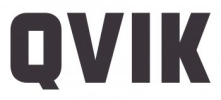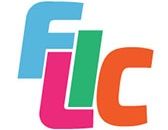10 ways to optimize your checkout and payment experience in practice

Minor adjustments yield major rewards when it comes to optimizing your payments. In this article, you'll learn ten concrete ways to ensure a frictionless checkout experience.
When thinking of growing your sales, checkout experience and payment flow are all too often overlooked. While mostly seen as mere mandatory technical parts of the buying process, we encourage focusing on these crucial elements of a successful customer journey. Optimizing your checkout and payment experience is an easy way to gain more revenue and improve customer experience.
Why is payment optimization important?
Optimizing your payments is one of the easiest and most cost-efficient ways to increase revenue. You don’t need to make hefty changes or improvements to your core product or service; simply ensure that your checkout experience is as frictionless as possible. By picking low hanging fruits and making minimal adjustments, you’ll often gain a great positive impact on your bottom line.
With payment optimization, you’ll also get an improved customer experience. When your customer is at checkout, they’ve already done their research, found a solution, compared alternatives, and chosen your brand. You definitely don’t want to lose them at this point! By improving your payment experience you’ll create happy customers and a lovable brand experience that will continue to contribute to your business’ success.
10 recommended ways to optimize your payments
Monitor transaction trends, especially declines: Keep track of your transaction trends and patterns to identify any anomalies or potential issues. We encourage building a proper dashboard to follow these metrics & defining a practice for regular follow ups and analysis.
Optimize payment gateway settings: Optimize your payment gateway settings to reduce false declines and improve acceptance rates. You’ll also maintain low fraud levels. Based on your product or service, fine tune things like 3DS & AVS settings, velocity rules, Merchant Category Codes, captcha practices, authorization expiration times, automatic retries, and so on.
Offer multiple payment options: Provide customers with a variety of payment methods to accommodate their preferences and reduce the likelihood of declines. Certain payment methods, such as mobile wallets, provide merchants with additional data that can be used in loyalty programs. Others have capabilities to streamline the checkout process with, e.g., one-click payments.
Optimize fraud detection tools: Configure your fraud detection tools and services, provided by payment processors or third-party providers, to identify and prevent fraudulent transactions. Targeting a 0% fraud rate is often not optimal, as it requires rules that are highly defensive. The risk of declining good customers is real.
Update customer payment details automatically & regularly: Use network tokenization or account updater to reduce transaction declines for stored credit cards. Alternatively, prompt customers to update their payment information regularly, but remember that each prompt is a potential friction point.
Monitor disputes & chargebacks: Alike monitoring declined transactions, monitoring disputes and chargebacks is essential for protecting revenue. You want to identify and minimize issues like friendly fraud, pricing errors, duplicate charges, refund or processing delays and overall understand potential quality issues your product or service might have. Chargeback management entails a cost in terms of time and resources you want to minimize. Depending on the amount of chargebacks, automating the management might make sense.
In addition to the items above, focusing on user experience often pays off:
Ensure accurate data entry: Validate input field data programmatically or encourage customers to double-check their payment information. This way you’ll minimize errors, such as typos, in credit card numbers, expiration dates, or billing and shipping addresses. Most payment service providers provide ready-made component libraries and payment pages that reduce your engineering efforts.
Communicate with customers: In case of declined transactions, provide clear and helpful instructions to customers on how to resolve the issue. You can also provide an alternative payment method. Balance between customer experience and potential risk of fraud in your communication.
Mobile optimize: Mobile-optimized checkout experiences aim to minimize friction points. Examples of such friction points could be extensive forms with numerous input fields, slow loading times, and difficult navigation. For most merchants, mobile is a primary sales channel, yet it’s not optimized to the extent that it should be. Optimize for a smooth and user-friendly process, taking into account the customer’s context, device, and limited screen size. This way you’ll achieve higher conversion rates.
Reduce the amount of required checkout steps: Every step in the checkout process poses a risk of losing a potential customer. Therefore be mindful of what customer data you collect and when. As a rule of thumb: only ask for the things you really need and preferably post transaction, if possible.
By implementing the actions listed above, you can minimize declined transactions, enhance the customer experience, and above all, increase the likelihood of a successful transaction.
We work with numerous merchants and payment service providers on a daily basis to improve and develop their payment and checkout experiences. We’ve also packaged our decades of experience into an offering that guarantees great results with limited investments.
Want to optimize your payments? Check out our payment optimization package.
Keen to learn more about failed transactions? Take a look at our nation-wide survey on why Finns abandon their shopping carts at the payment stage.
AUTHOR:
Lari Tuominen
CEO
Qvik

Lisätietoja
Tagit
Liiketoimintaprosessi
 |
Asiakaspalvelu |
 |
Myynti |
 |
Tuotekehitys ja suunnittelu |
Erikoisosaaminen
 |
Ohjelmistokehitys |
 |
Mobiilikehitys |
 |
Maksaminen |
Toimialakokemus
 |
Hotelli, matkailu ja ravitsemus |
 |
Järjestöt ja yhdistykset |
 |
Kauppa |
 |
Kiinteistöala |
 |
Kuljetus, liikenne ja logistiikka |
 |
Media |
 |
Pankki ja vakuutus |
 |
Telekommunikaatio |
 |
Terveys- ja sosiaalipalvelut |
 |
Urheilu, viihde ja virkistys |
Tarjonnan tyyppi
 |
Konsultointi |
 |
Toteutustyö |
 |
Tuki- ja ylläpitotyö |
 |
Vuokratyövoima |
 Qvik - Asiantuntijat ja yhteyshenkilöt
Qvik - Asiantuntijat ja yhteyshenkilöt
 Qvik - Muita referenssejä
Qvik - Muita referenssejä
 Qvik - Muita bloggauksia
Qvik - Muita bloggauksia
It- ja ohjelmistoalan työpaikat
- Laura - IT BUSINESS PARTNERING DIRECTOR
- Laura - Data Engineer
- Laura - Datainsinööri, tietohallinto
- Laura - Ohjaaja media- ja it-tiimi / oppisopimus
- Laura - Kesätyöpaikat IT-ala
- Frends iPaaS - Technical Community Manager
- Druid Oy - Myyjä - hunter-henkinen tekijä, joka saa tuloksia aikaiseksi!
Premium-asiakkaiden viimeisimmät referenssit
- Maxtech - Muonion kunta modernisoi työajanseurantansa Maxtechin järjestelmällä
- Identio Oy - Identio x Svenska litteratursällskapet i Finland - Täsmäosaamista modernin sisällönhallintajärjestelmän kehittämiseen
- Hellon - Redefining Digital Insurance for Vodafone
- Agenda Digital - Fican.fi WordPress-verkkosivut
- Red & Blue Oy - Taivalkosken uusi saavutettava ja erottuva verkkopalvelu
- Hion Digital Oy - Vauvan ja vanhemman matkassa – Verkkosovellus, jonka sisältö mukautuu elämäntilanteeseen
- Verkkovaraani Oy - Uudet kotisivut Talin ja Ruusulan keilahalleille
Tapahtumat & webinaarit
- 15.01.2025 - Datavastuullisuuden valmennus: hanki valmiudet vastuulliseen datan ja tekoälyn hyödyntämiseen
- 15.01.2025 - SaaS-klubi: Myyntivetoinen kasvu
- 23.01.2025 - Generatiivisen tekoälyn hyödyt liiketoimintajohtajalle
- 29.01.2025 - Modern toolchain and AI breakfast seminar with Eficode, AWS and HashiCorp
- 30.01.2025 - Suuri Rahoitusilta
Premium-asiakkaiden viimeisimmät bloggaukset
- Maxtech - Avainta TES -muutokset ja niiden hallinta: Näin Maxtech voi auttaa
- Vetonaula Oy - Windows 10:n tuen päättyminen: mitä yrityksesi tulisi tietää?
- SC Software Oy - Koodia ihmiseltä ihmiselle jo 10 vuotta
- Aveso Oy - Kestävää tulevaisuutta rakentamassa teknologian avulla – IFS ESG-työkalut integroituna järjestelmään
- Identio Oy - Web Applications: How We Build Minimum Lovable Products in 2025 – Launching the Product
- Kisko Labs Oy - Ideasta innovatiiviseksi ohjelmistoksi ja menestyväksi liiketoiminnaksi
- Timeless Technology - Tempmate dataloggerit äärimmäisten lämpötilojen mittaamiseen.

|
Digitalisaatio & innovaatiot blogimediaBlogimediamme käsittelee tulevaisuuden liiketoimintaa, digitaalisia innovaatioita ja internet-ajan ilmiöitä |



















































